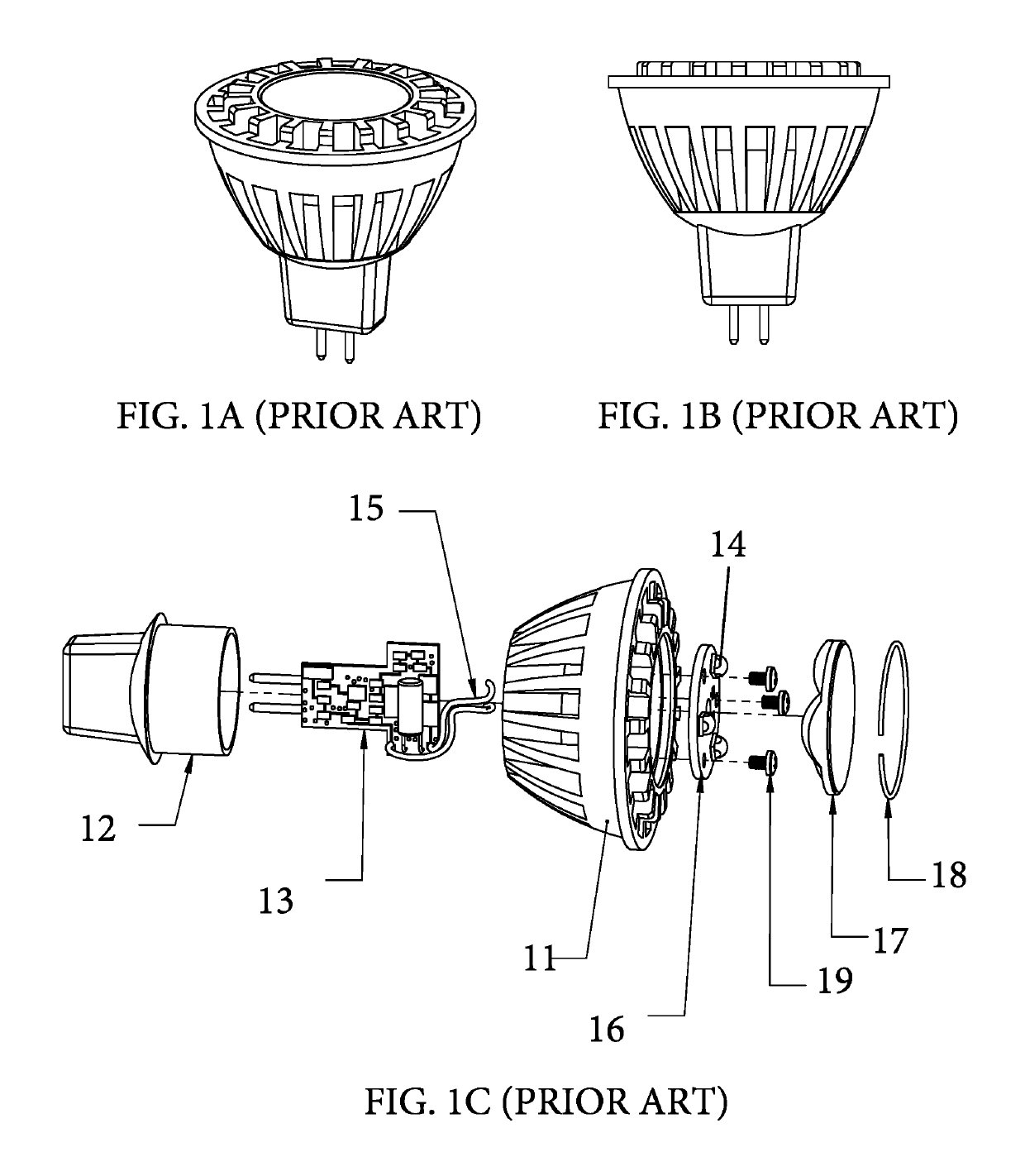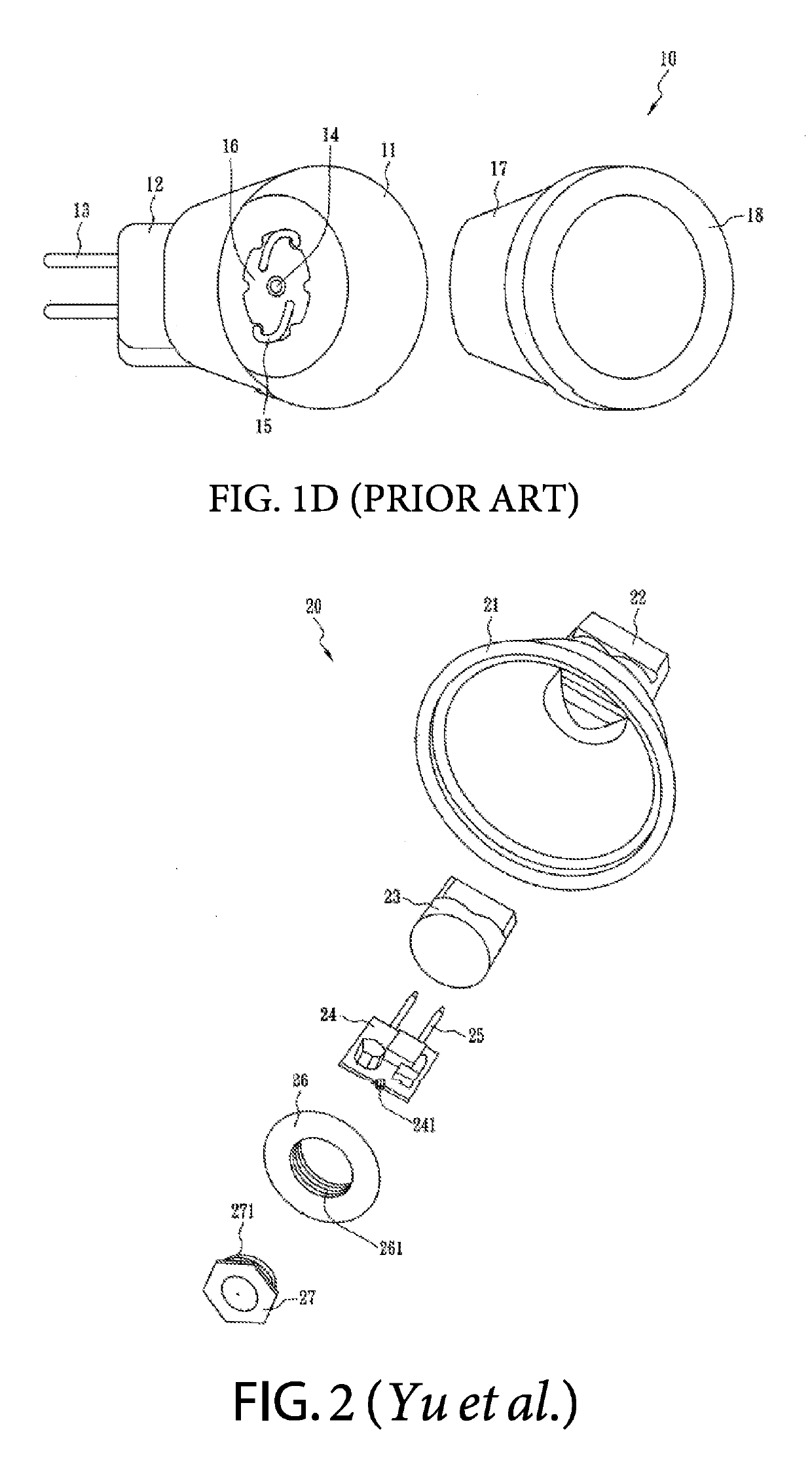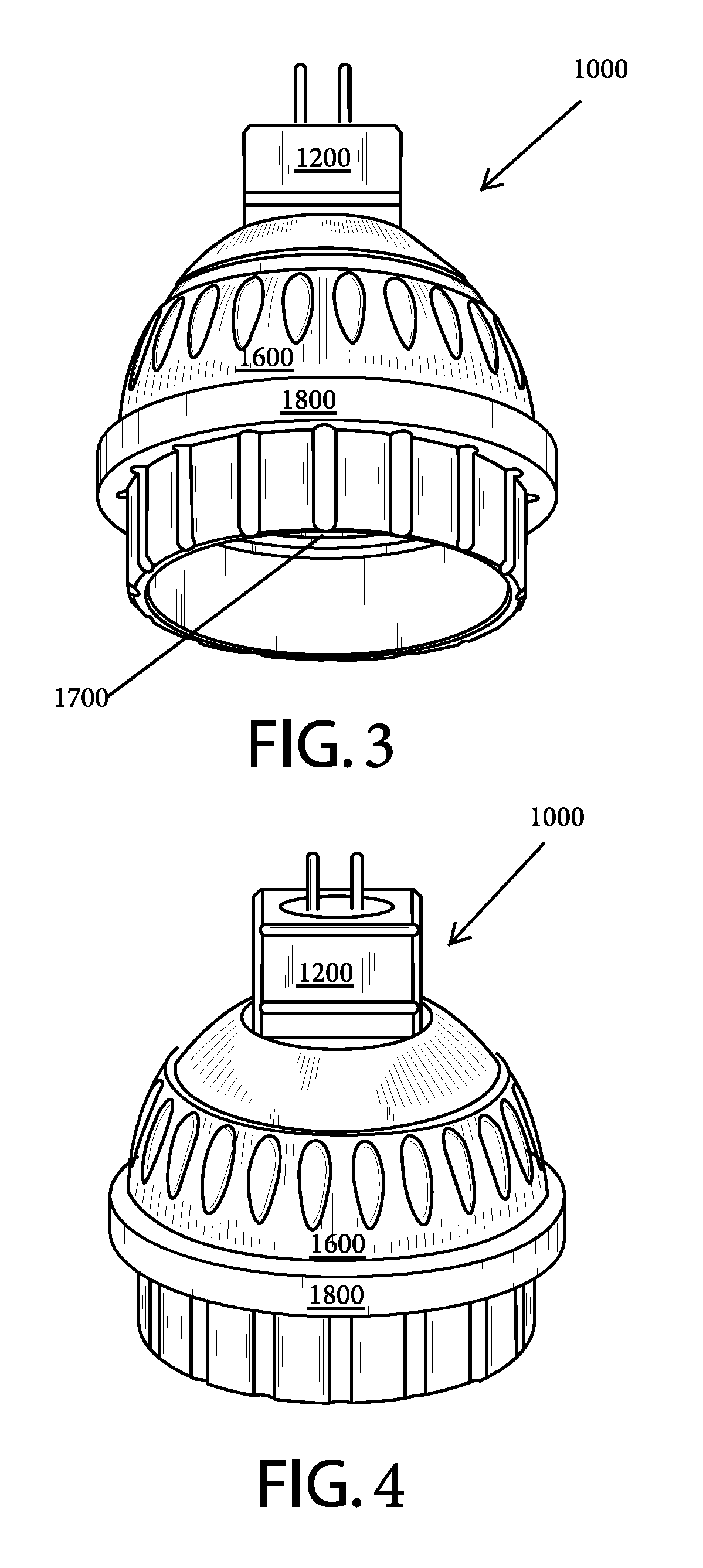Light module with self-aligning electrical and mechanical connection
a technology of light module and electrical and mechanical connection, which is applied in the direction of lighting device details, light sources, lighting and heating apparatus, etc., can solve the problems of reduced service life, inefficient led light source, heat buildup, etc., and achieves rapid replacement, efficient heat dissipation, and rapid replacement of driver circuitry
- Summary
- Abstract
- Description
- Claims
- Application Information
AI Technical Summary
Benefits of technology
Problems solved by technology
Method used
Image
Examples
Embodiment Construction
[0049]Generally disclosed is an LED lighting module (including but not limited to lamps, light bulbs, or light fixtures) with (i) rapidly replaceable LED light source units and (ii) rapidly replaceable driver circuitry, and (iii) efficient heat transfer. An aspect of the rapid replaceability of the disclosed lighting device is self-registration of the device's heat sources (e.g., light elements, electronic drive components) relative to the optical, power leads or pins, and finally, heat sink components of the lighting device. Preferably, self-registration may be accomplished via at least one of (a) corresponding geometries between the various components of the LED lighting device, (b) power transmission regions, areas or zones on the LED lighting module that interface with power leads or pins of the lamp or lighting device, or (c) thermal conduction regions, areas or zones that interface with heat dissipation elements of the lamp or lighting device. In a preferred embodiment, the mo...
PUM
 Login to View More
Login to View More Abstract
Description
Claims
Application Information
 Login to View More
Login to View More - R&D
- Intellectual Property
- Life Sciences
- Materials
- Tech Scout
- Unparalleled Data Quality
- Higher Quality Content
- 60% Fewer Hallucinations
Browse by: Latest US Patents, China's latest patents, Technical Efficacy Thesaurus, Application Domain, Technology Topic, Popular Technical Reports.
© 2025 PatSnap. All rights reserved.Legal|Privacy policy|Modern Slavery Act Transparency Statement|Sitemap|About US| Contact US: help@patsnap.com



